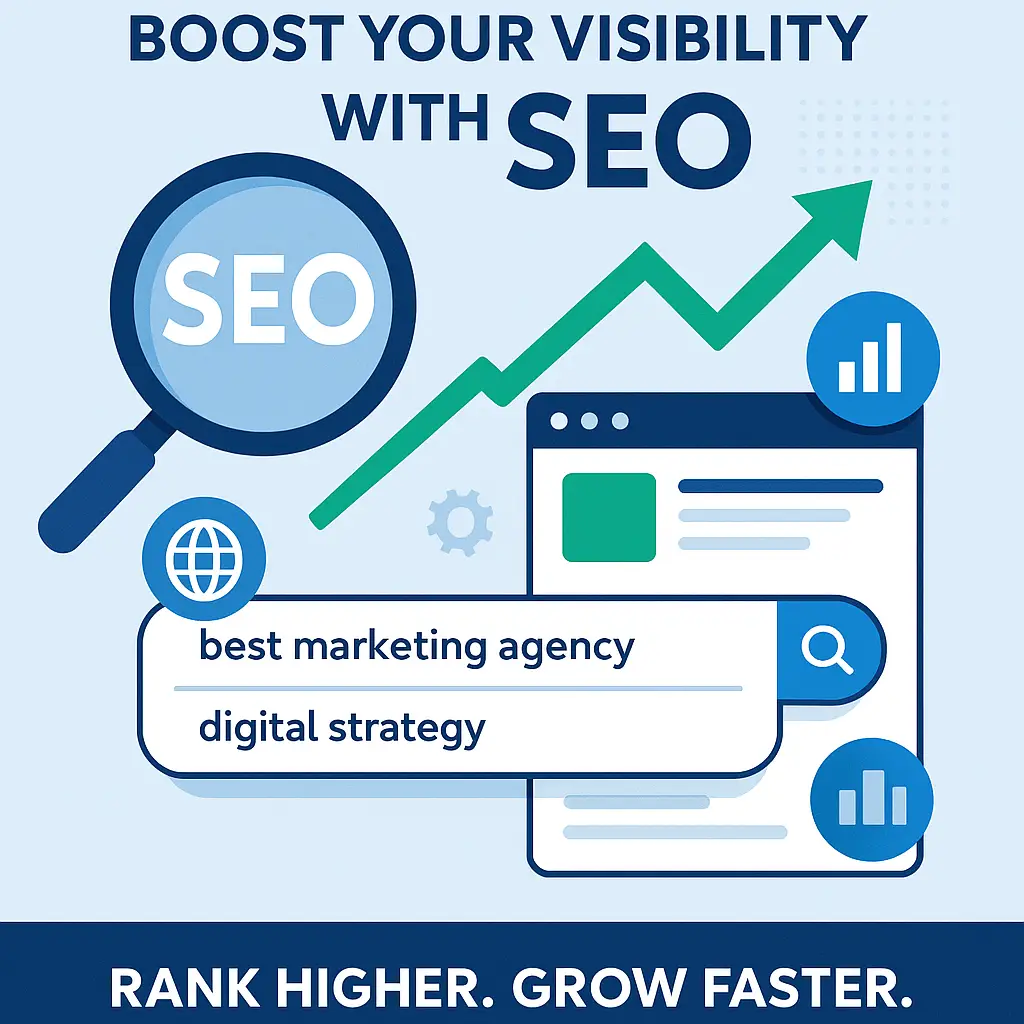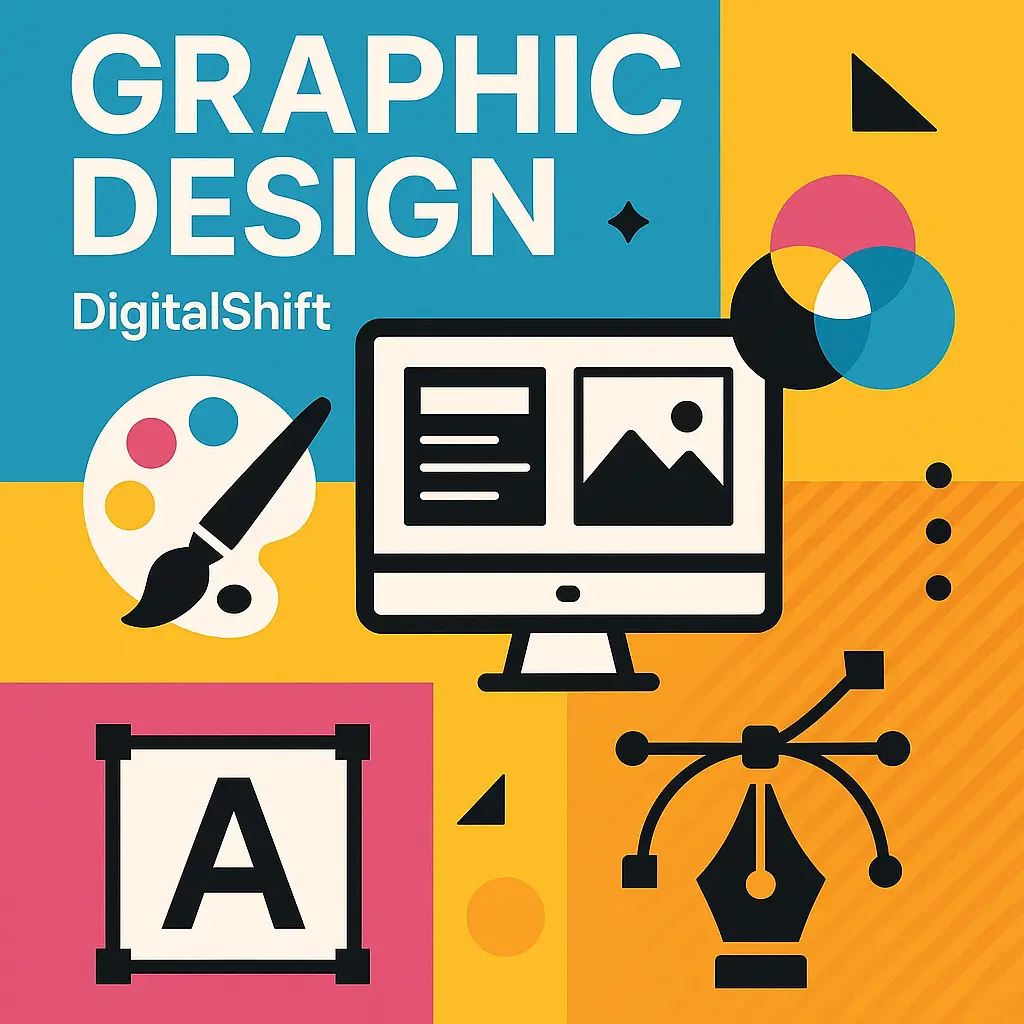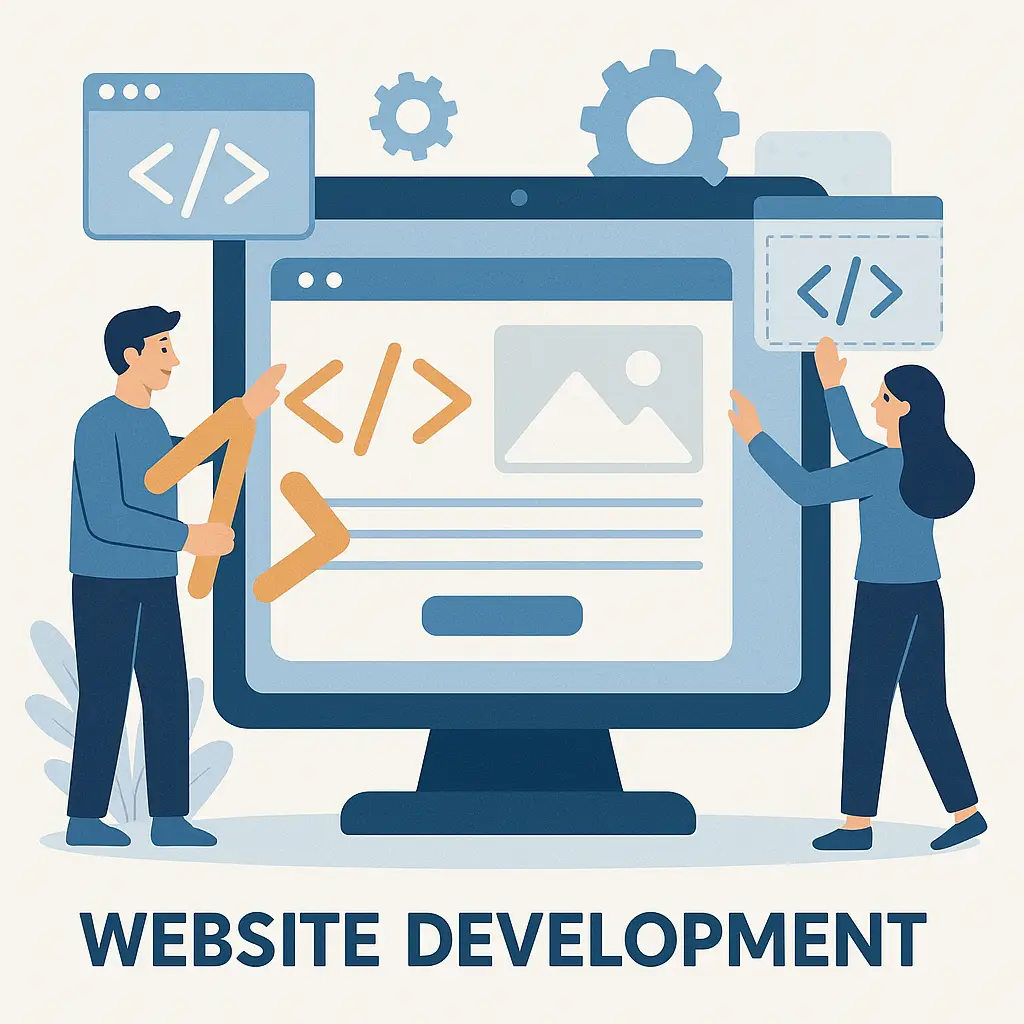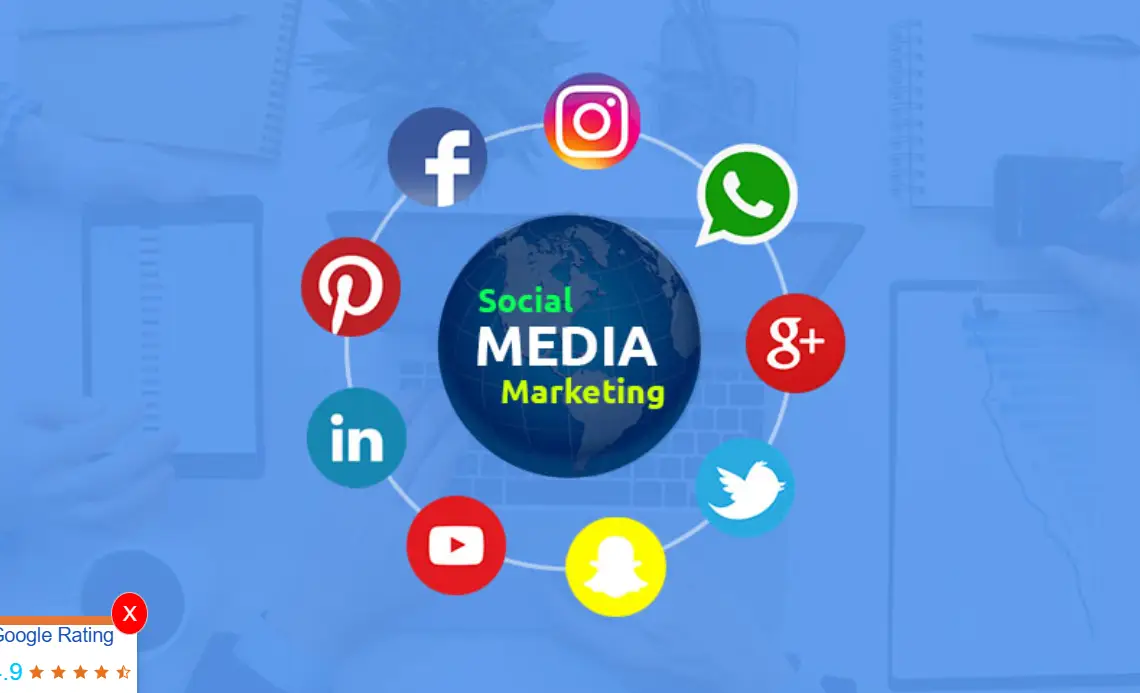

SEO stands for Search Engine Optimization and helps search engines understand your website’s content and connect it with users by delivering relevant, valuable results based on their search queries.
The goal of SEO is to rank on the first page of search engine results pages (SERPs) for the most relevant and valuable keywords to your target demographic, driving qualified traffic to your site.
SEO is considered a digital marketing practice and can be applied to any website. It helps improve a site’s visibility on search engines like Google and Microsoft Bing. Whether your site promotes products, offers services, or shares expert knowledge on a specific topic, SEO can help drive traffic and increase online visibility.
Graphic design is a , academic profession and applied art that involves creating visual communications intended to transmit specific messages to social groups, with specific objectives. Graphic design is an interdisciplinary branch of and of the design fine arts. Its practice involves creativity, innovation and lateral thinking using manual or digital tools, where it is usual to use text and graphics to communicate visually.
The role of the graphic designer in the communication process is that of the encoder or interpreter of the message. They work on the interpretation, ordering, and presentation of visual messages. In its nature, design pieces can be philosophical, aesthetic, emotional and political.


Web development is the process of creating and maintaining websites and web applications. It encompasses everything from designing the user interface to managing the server-side logic. It’s a broad field that includes front-end development, back-end development, and full-stack development.
- Front-end Development:
This focuses on the user interface and user experience (UI/UX) – what users see and interact with directly. It involves using languages like HTML, CSS, and JavaScript to build the visual elements, layout, and interactivity of a website.
- Back-end Development:This handles the server-side logic, databases, and other behind-the-scenes functionality that makes a website work. Back-end developers use languages like Python, Java, Ruby, or PHP.
What Is Social Media Marketing (SMM)?
Social media marketing is the use of social media—the platforms on which users build social networks and share information—to build a company’s brand, increase sales, and drive website traffic. In addition to providing companies with a way to engage with existing customers and reach new ones, SMM has purpose-built data analytics that allows marketers to track the success of their efforts and identify even more ways to engage.
According to DataReportal and Kepios, there were 5.31 billion social media identities across the world as of April 2025.1 As a result, SMM has incredible reach to consumers. Let’s take a closer look at the strategies and practices and drive social media marketing.


Affiliate marketing is a marketing arrangement in which affiliates receive a commission for each visit, signup or sale they generate for a merchant. This arrangement allows businesses to outsource part of the sales process. It is a form of performance based marketing where the commission acts as an incentive for the affiliate; this commission is usually a percentage of the price of the product being sold, but can also be a flat rate per referral.
Affiliate marketers may use a variety of methods to generate these sales, including organic search, paid search engine marketing, e-mail marketing, content marketing, display marketing, organic social media marketing, and more.
Though the largest companies run their own affiliate networks (for example Amazon), most merchants join networks affliates which provide reporting tools and payment processing.
Content marketing is a form of marketing focused on creating, publishing, and distributing content for a targeted audience online. It is often used in order to achieve the following business goals: attract attention and generate leads, expand their customer base, generate or increase online sales, increase brand awerness or credibility, and engage a community of online users. Content marketing attracts new customers by creating and sharing valuable free content as well as by helping companies create sustainable brand loyalty, providing valuable information to consumers, and creating a willingness to purchase products from the company in the future.
Content marketing starts with identifying the customer’s needs. After that, the information can be presented in a variety of long form and short form formats, including news, video, white papers, e – books, infographics, email newsletters, case studies, podcast, how-to guides, question and answer articles, photos, blogs, etc.Examples of short form content include short blog posts and social media posts.
